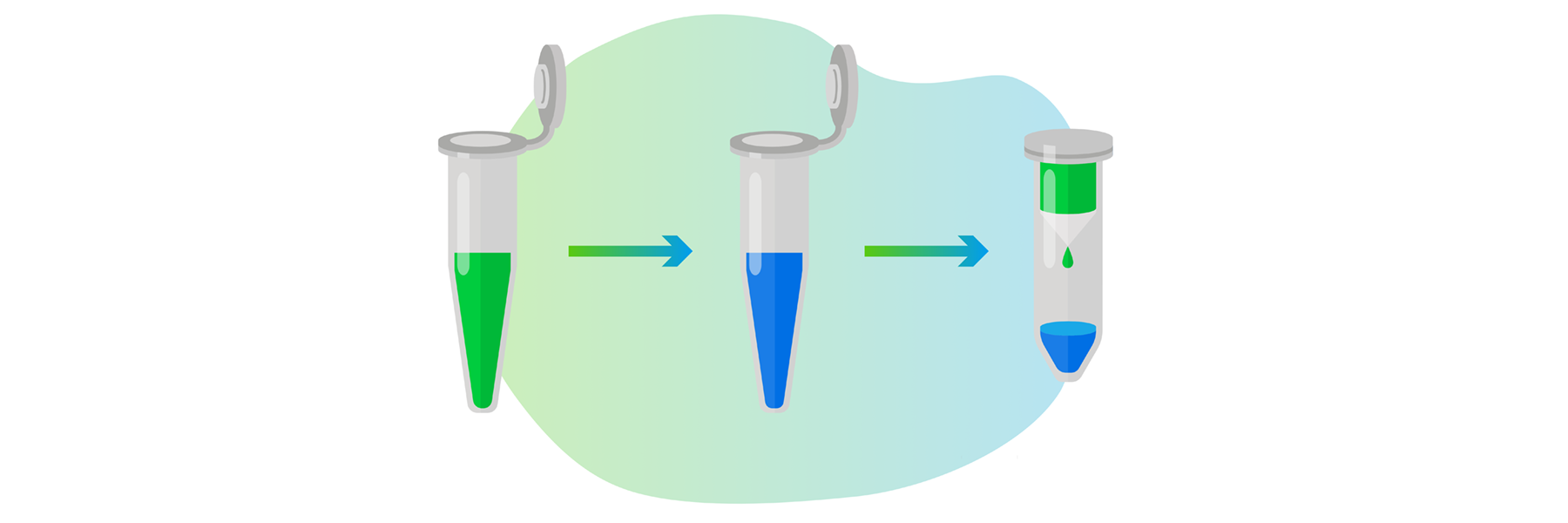Plasmid DNA purification, better known as plasmid preparation includes; the growth of bacterial culture, the harvesting, and lysis of bacterial cells, and the purification of plasmid DNA. The purified plasmid DNA is suitable for use in cloning, gene transfer, transformation and sequencing.

Below we list some of the common problems you may encounter, their cause, and how to solve them.
Problem: Incomplete cell lysis
Possible Cause: Cell density is too high.
Solution: Reduce the culture volume.
Possible Cause: Cell pellet not completely resuspended.
Solution: Use an appropriate buffer or solution to properly re-suspend the cell pellet prior to cell lysis.
Possible Cause: Insufficient alkaline lysis step.
Solution: Check the lysis solution for salt precipitates.
Problem: DNA/RNA Contamination
Specific Problem: Genomic DNA contamination.
Solution: Do not vortex the cells too vigorously during the lysis and neutralization steps.
Possible Cause: Lyophilized RNase has not completely dissolved.
Solution: Dissolve the RNase as mentioned in the protocols.
Specific Problem: RNA contamination.
Solution: Add RNase to the resuspension solution before first use.
Possible Cause: Too many bacterial cells.
Solution: Reduce the culture volume so as to not overload the reaction or column.
Possible Cause: Cultures are too old.
Solution: Do not use cultures older than 24 hours or that are already in the death phase.
Problem: Low or no yield
Possible Cause: Culture volume too high.
Solution: Reduce the culture volume to increase the number of lysed cells.
Possible Cause: Plasmid did not propagate.
Solution: Use freshly streaked bacterial cells for inoculation.
Possible Cause: Selective pressure too low.
Solution: Use an appropriate quantity of antibiotics during the cultivation to avoid the overgrowth of non-transformed cells without the plasmid of interest.
Possible Cause: The culture was not processed immediately.
Solution: Always use a freshly grown culture. If you need to process the preparation another day; pellet the cells, remove the culture medium, and store the cell pellet at -70 °C.
Possible Cause: Reduced effectiveness of kit components.
Solution: Store the kit components under appropriate conditions.
Possible Cause: Wash solution too concentrated.
Solution: Keep the bottle tightly sealed to avoid ethanol evaporation.
Problem: Poor performance in downstream processes
Possible Cause: Additional plasmid forms present.
Solution: Avoid denaturation of the plasmid DNA - do not prolong cell lysis for more than recommended in the protocol.
Possible Cause: Plasmid DNA concentration is too low.
Solution: Precipitate the plasmid DNA and re-suspend in a smaller volume to concentrate the DNA.
Possible Cause: Ethanol present in the resuspended plasmid DNA.
Solution: Increase the drying time.
Planning to repeat this experiment? Consider these tips!
- During plasmid preparation, make sure to use a salt such as sodium acetate to help precipitate the nucleic acids out of solution
-
- The positively charged sodium ions react with the sugar-phosphate backbone of the plasmids, making the plasmid more hydrophobic and less soluble in water,
- Sodium acetate is particularly effective in DNA plasmid purification,
- Use lithium chloride as the salt for purification of RNA plasmids.
- During plasmid preparation, make sure to use ethanol as the solvent if the sample is small, its volume is sufficient, or if longer storage time is required
-
- Both nucleic acids and salts are less soluble in isopropanol than ethanol,
- If you can only fit 1 volume of alcohol to 1 volume of your DNA sample, use isopropanol instead.
- During plasmid preparation, make sure to incubate the DNA, sodium acetate, and ethanol mixture at a temperature of at least -4 °C for approximately 20 minutes. However, -20 °C or -40 °C is preferable
-
- If the yield is low, try increasing the incubation time to 30-60 minutes.
Further Tips
- Do not use too much biomass for the plasmid preparation,
- Always use freshly grown cultures,
- Avoid air bubbles during the resuspension of the cell pellet,
- Do not prolong the incubation time within the lysis step.




